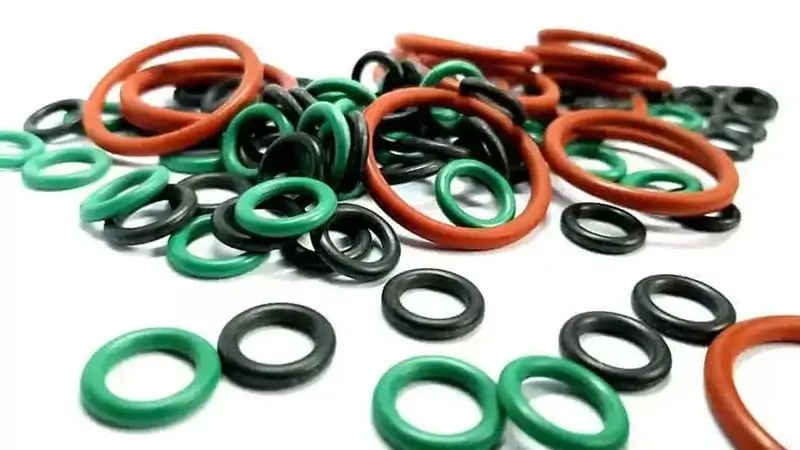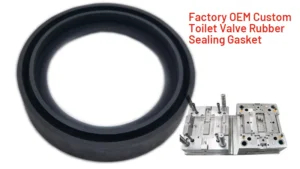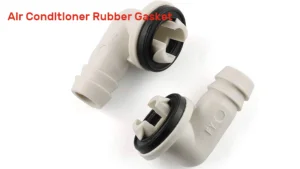Nitrile rubber O-rings, also named NBR O rings, are a widely used sealing component, known for their exceptional performance characteristics across various industries such as automotive, mechanical, and chemical. This article will provide a detailed overview of their performance features and application scenarios.
Advantages of Nitrile Rubber O-rings
Firstly, nitrile rubber O-rings are renowned for their excellent oil resistance. As a type of synthetic rubber, nitrile rubber maintains a strong sealing effect in lubricating oils and liquid fuels. This property makes them ideal for use in hydraulic and fluid power transmission equipment, automotive engines, and gas appliances, where effective oil sealing is crucial.
In addition to oil resistance, nitrile rubber O-rings exhibit good heat resistance. They can maintain elasticity and sealing performance within a temperature range of -30°C to 120°C, making them suitable for sealing needs in refrigeration equipment, air conditioning systems, and certain military applications. In these environments, nitrile rubber O-rings effectively prevent the leakage of liquids and gases, ensuring the proper functioning of the equipment.
Moreover, nitrile rubber O-rings possess outstanding solvent resistance. They can withstand the corrosion and immersion of various organic solvents, such as gasoline, acids, and alkalis. This characteristic allows them to be widely used in chemical equipment, the petroleum industry, and the food industry, maintaining good elasticity and sealing performance in environments where they come into contact with solvents.
Beyond oil, heat, and solvent resistance, nitrile rubber O-rings also feature anti-aging, anti-oxidation, and wear-resistant properties. Specially modified and formulated nitrile rubber materials can maintain excellent physical properties even under prolonged use and harsh conditions. This makes them suitable for sealing environments in heavy machinery, metallurgical equipment, and mining equipment, providing reliable sealing performance in demanding conditions.
Applications of Nitrile Rubber O-Rings
In practical applications, the superior performance of nitrile rubber O-rings has been widely validated.
In the automotive sector, they are extensively used for sealing in engines, transmission systems, and hydraulic systems, effectively preventing the intrusion of liquids and contaminants and ensuring the smooth operation of vehicles.
In the mechanical field, nitrile rubber O-rings are used in pumps, valves, cylinders, and other equipment to prevent the leakage of liquids and gases, ensuring the safety and reliability of mechanical equipment.
In the chemical, pharmaceutical, and food industries, nitrile rubber O-rings play an important role in providing waterproof and dustproof sealing during the transportation and processing of liquid media.
Other Materials for O Rings
Besides nitrile rubber, silicone rubber, polyurethane, polytetrafluoroethylene, EPDM rubber, and metal are also common materials for o rings. The choice of material depends on the specific application requirements, such as oil resistance, high-temperature resistance, and chemical corrosion resistance. Factors like the medium, temperature, and pressure of the application environment are considered to ensure the material’s physical and chemical properties meet the demands. Below are some O ring properties and applications. We offer customized based on your requirements.
Polyurethane O ring: Polyurethane material has excellent elasticity, wear resistance, and corrosion resistance, and is suitable for high temperature and high-pressure environments.
Polytetrafluoroethylene O ring: Polytetrafluoroethylene material has excellent corrosion resistance and high-temperature resistance, and is suitable for various corrosive media and high-temperature environments.
Metal O Ring: Metal materials have good wear resistance and corrosion resistance, and are suitable for high temperature and high pressure environments. Commonly used metal materials include stainless steel, copper, aluminum, etc.
O Rings Manufacturing Processes
Calendering
This method involves shaping the rubber material using calendering machinery, which rolls and flattens the rubber into sheets. These sheets are then cut into the desired size for O-rings. Calendering is suitable for producing large batches of O-rings efficiently and cost-effectively.
Compression Molding
This process is used for larger and more complex O-rings. Rubber material is placed into preheated molds and then formed under high temperature and pressure. Compression molding results in better sealing performance and more accurate dimensions.
Injection Molding
Ideal for high-precision and complex O-rings, this method involves heating and melting the rubber material, then injecting it into molds. Injection molding is known for its fast production speed and excellent product consistency.
Conclusion
Nitrile rubber O-rings, with their outstanding oil, heat, and solvent resistance, as well as anti-aging properties, are an ideal choice for sealing needs in mechanical equipment, automotive, and chemical industries. Selecting the appropriate nitrile rubber O-ring and ensuring proper installation and maintenance can effectively prevent damage from liquids and dust to equipment and systems, extend the service life of equipment, and enhance operational efficiency.






